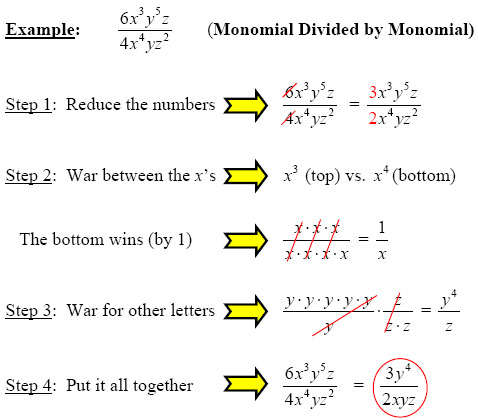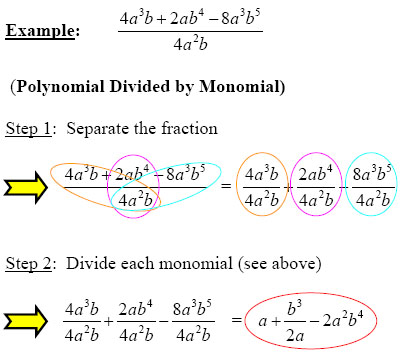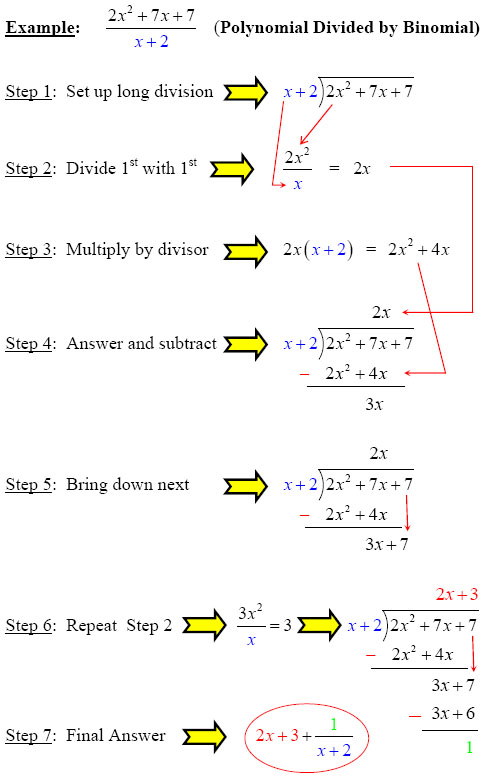
 |
|
|
|
Polynomial DivisionPolynomial division depends on the number of terms in the denominator (divisor).
If you need a refresher, take a look at naming polynomials. You can think of this problem as a war between the top and the bottom. Check out the example below to see what we mean.
Note: you can probably do the "war" in your head for all of the letters. Essentially you are subtracting the top exponent from the bottom exponent for each individual variable.
Now that you know how to divide a monomial by a monomial, you can divide any polynomial by a monomial. All you have to do is break it up into seperate problems. Notice the three colored circles below - each one becomes it own division problem like we did above.
Now you are ready to really learn polynomial division. This process is more difficult than the previous, but you can handle it - with some GradeA help of course. When you divide a polynomial by a binomial you are basically performing long division. Do you remember that from elementary school? Take a look at the example below. Sorry there are so many steps!
|
Stay connected |
||
| . | ||
| Home │ Site Search │ Math Help Blog │ Help Keep GradeA Free | |
Written by Team GradeAmathhelp.com, all rights reserved. | ||


